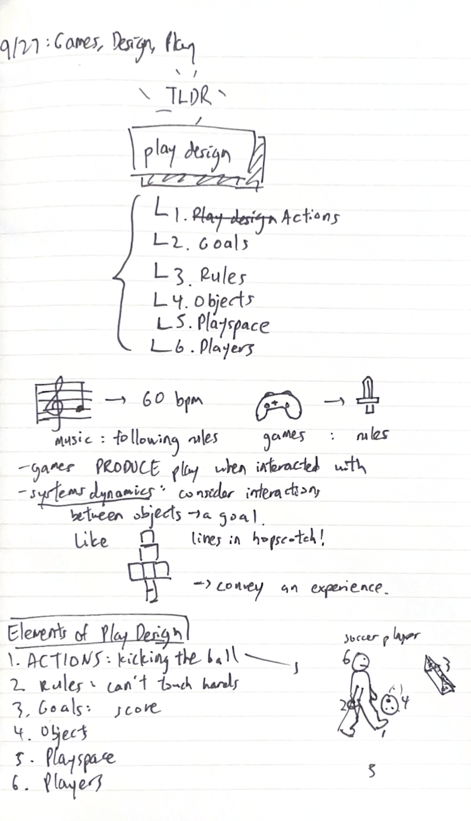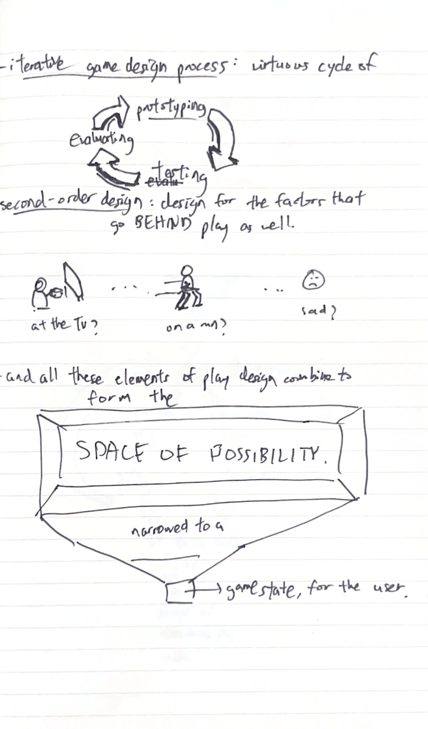Sketchnote
Exercises
1. Identify the basic elements in a game of your choice (actions, goals, rules, objects, playspace, players).
I’ll go with one of my favorite games of all time, Deep Rock Galactic:
- Actions: Mine ore, destroy monsters, deploy ziplines, place turrets
- Goals: Extract as many resources as possible for your resource company, in this dystopian sci-fi game. Secure your teammates’ positions in case they get overrun by monsters
- Rules: Don’t shoot your teammates, must extract enough resources before time limit elapses
- Objects: Dwarves, mobs, turrets, ziplines, local environment, plants, rock
- Playspace: Hostile alien planet with mobs in every corner and often surprisingly beautiful plants and fauna
- Players: 4 gung-ho dwarves sent on a dangerous mining mission — your co-op friends!
2. As a thought experiment, swap one element between two games: a single rule, one action, the goal, or the playspace. For example, what if you applied the playspace of chess to basketball? Imagine how the play experience would change based on this swap.
What if I applied the goal of Risk to Wii Sports Resort? Suddenly Wii Sports Resort is no longer a relaxing game to get some exercise — it becomes a quest to obtain ultimate sports supremacy through conquering your competing athletes in all your rival countries. It would definitely change the progression of the game (from the point skill level system to a more world domination based progression system)
3. Pick a simple game you played as a child. Try to map out its space of possibility, taking into account the goals, actions, objects, rules, and playspace as the parameters inside of which you played the game. The map might be a visual flowchart or a drawing trying to show the space of possibility on a single screen or a moment in the game.

4. Pick a real-time game and a turn-based game. Observe people playing each. Make a log of all the game states for each game. After you have created the game state logs, review them to see how they show the game’s space of possibility and how the basic elements interact.
Protobowl is a real-time online trivia game in the style of quiz bowl. Players try to quickly answer trivia questions which are progressively typed out onto the screen. Here are its states:
- Awaiting question
- Answering question
- Pausing until next question
In Protobowl, the states and goal mechanism (point-based reward system) combine to incentivize players to respond as quickly as possible and answer many questions.
Game Pigeon Basketball is a turn-based game played over iMessage. Players try to score as many hoops as they can within 30 seconds. The finished tally is sent to another recipient, who has the chance to best their challenger’s score. Here are its states:
- Awaiting start
- Shooting hoops (hoop made, missed. Balls can fly in any direction)
- Finished game (less than opponent: try again. More than: confetti)
In Game Pigeon, the simple goal of scoring as many hoops, combined with the social competitive element (and the visceral fun of shooting hoops with your finger) combine to form a compelling casual game to play against friends!



